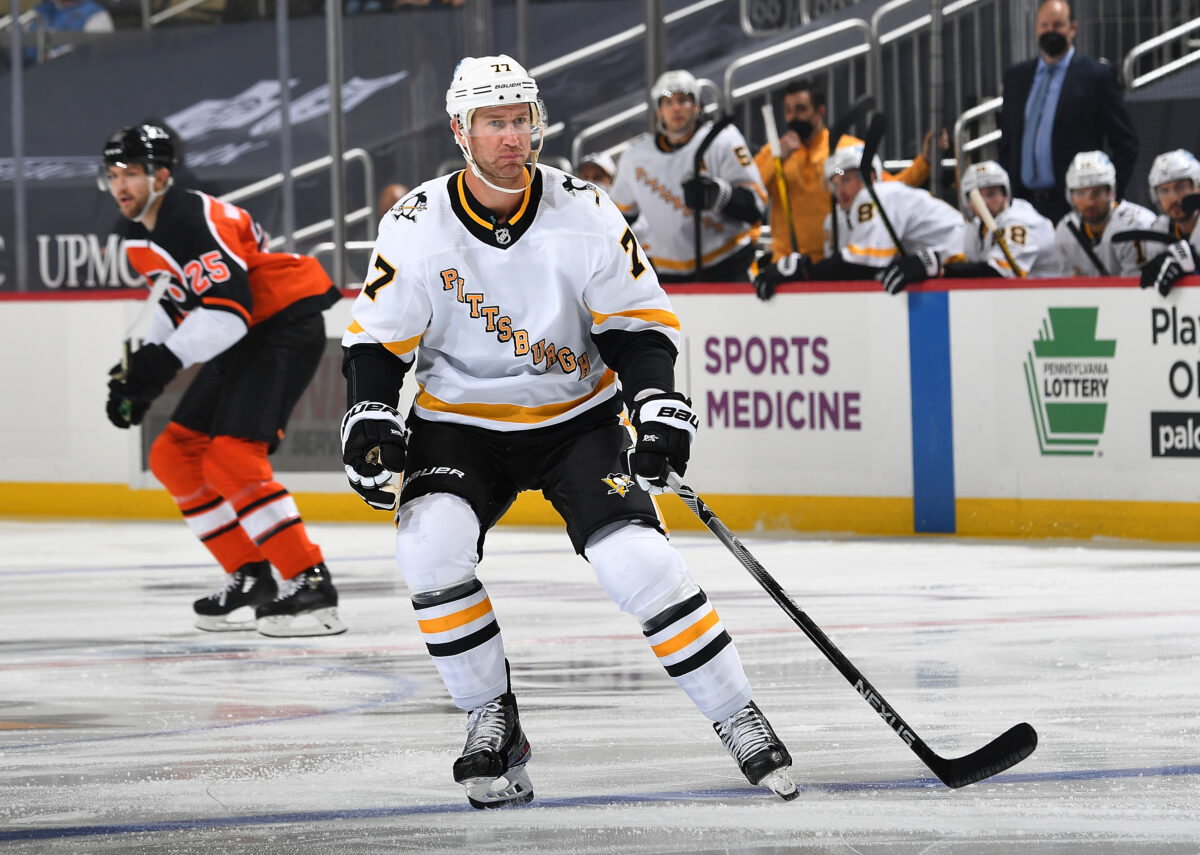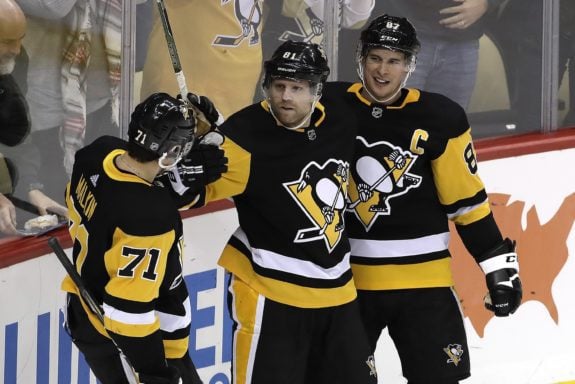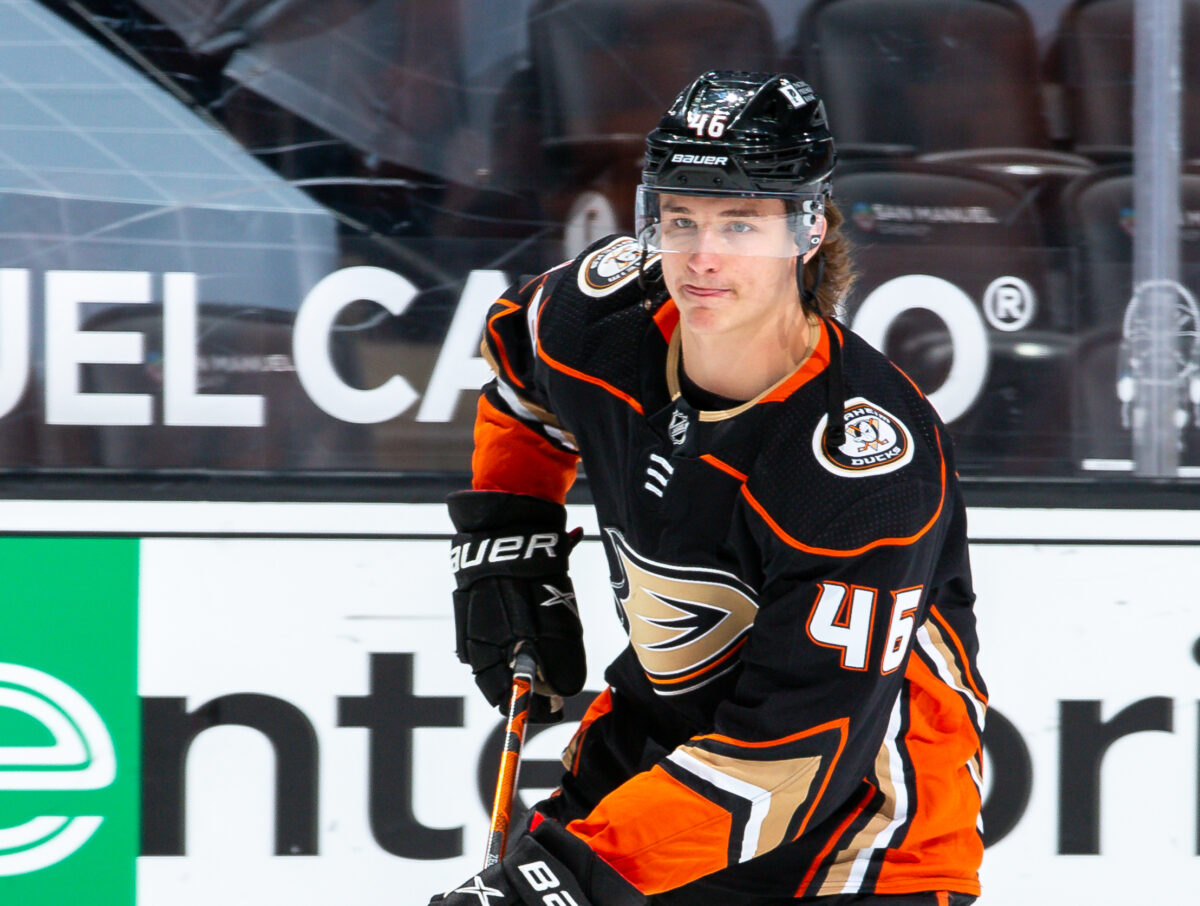The style of play in the NHL is splitting into two camps. On the one hand are teams like the Anaheim Ducks and Los Angeles Kings. Filled with exciting rookies and other young stars who light up the scoreboards on an almost daily basis, the newly-drafted cores of these teams will define the league for the foreseeable future. On the other hand are the teams that have defined the league for the past decade and a half.
The Pittsburgh Penguins find themselves in the latter group, with a core that has gone largely unchanged for nearly two decades. What’s more, the streaking Penguins are currently riding an eight-game winning streak and coming off a long pause due to the league’s COVID-19 holiday shutdown. (from “As COVID-19 Issues Rise Again, NHL Pauses Season” Matt Vensel. Pittsburgh Post-Gazette. 20/12/2021).

Having already won a wild, back-and-forth game against the San Jose Sharks on Jan. 2, the Penguins are well-positioned heading into the upcoming western road trip, which begins in Dallas on Jan. 8. The upcoming games against the Ducks, Kings, Sharks and Golden Knights offer the perfect opportunity to compare the seemingly ever-constant presence of the Penguins to the league’s new order.
Trajectory of Ducks Eerily Similar to Penguins of Decades Past
When placed under a microscope, the 2021-22 Ducks are remarkably similar to the Penguins teams that won three Stanley Cups in 2009, 2016, and 2017. Sidney Crosby, Evgeni Malkin, and Marc-André Fleury, the two forwards and goaltender, who would go on to form the core of the Penguins for more than a decade, absolutely electrified the league during their rookie seasons.
Crosby and Malkin finished with 39 and 33 goals, respectively, and Fleury began developing into the greatest netminder in franchise history. When they arrived, they were widely marketed as the generational superstars who would save the struggling franchise.

The Ducks are on a remarkably similar path, save for the potential bankruptcy. Last season, the Ducks finished dead last in their division and second-to-last in the league, ahead of only the lowly Buffalo Sabres. The draft has become the Ducks’ saving grace, as it has given them honest-to-goodness superstars in Trevor Zegras and Troy Terry. Zegras was recently voted the NHL’s Rookie of the Month for December, scoring two goals and adding nine assists in 11 games. Ducks’ goalie John Gibson is thus a Fleury stand-in, as he has been present in the Ducks’ crease since he was drafted in 2011.
Penguins’ Opponents Emblematic of New-Look NHL
Crosby, Malkin, and the Penguins franchise have largely symbolized the league since they arrived. However, they have both been active players since the mid-2000s, which unfortunately means they won’t be around forever. As much as hockey fans would love to see them keep going, eventually, they’ll have to hang up their skates just as every other great player has done.
If the Penguins represent past greatness, their upcoming opponents represent the future of the league. While the young, exciting rookies may not get a great deal of playing time (if any at all – Anaheim’s Zegras and Los Angeles’ Alex Iafallo and Alex Turcotte recently entered the league’s COVID-19 protocol and other Kings’ top draft pick Quinton Byfield is in the midst of a stint in the American Hockey League), the opponents nonetheless have been galvanized by the rookies, just as the Penguins were all those years ago.

The Pens’ first game of the road trip, in Dallas on Jan. 8, will see them take on the Stanley Cup Finalists from two seasons ago and will pit them against some of the best young players in the league. 22-year-old Stars’ defenceman Miro Heiskanen, although only drafted in 2017, already holds the franchise mark for playoff points by a defenceman with 26 and has perpetually entered the Norris Trophy conversation since he received twelve votes in his sophomore season. Forward Denis Gurianov has been a perpetual threat since he established himself as an elite playoff performer in 2019-20.
Related: 3 Takeaways From Penguins’ Wild Win Over Sharks
The Vegas Golden Knights, the Penguins’ opponent on Jan. 17, can be painted as the team that will define the league’s future. The electric culture of T-Mobile Arena came as a direct result of expansion fervour and was bolstered by their appearance in the 2018 Stanley Cup Final. Just as the city of Pittsburgh was re-ignited with the arrival of Crosby and Malkin, the Golden Knights have done the same for the city of Las Vegas and the franchise captivated the league in the same manner.
The Penguins represent everything the NHL became in the mid-2000s after the arrival of generational players like Crosby, Alexander Ovechkin, and Patrick Kane. Although no one wants to admit it, this era is nearing an end, and the Penguins’ upcoming western road trip will pit the NHL’s proven modern greats against the league’s up-and-coming rookies, who represent the future of the sport.